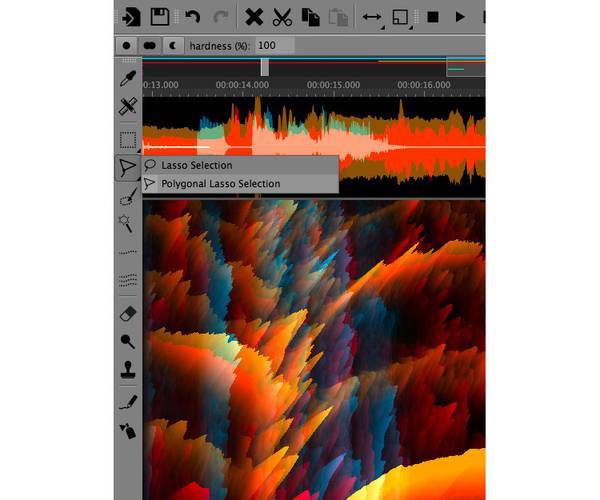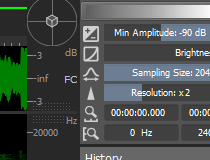

In HALion, choose Options > Edit > External Wave Editor.Starting with Nuendo 10.1, you can assign SpectraLayers as an ARA plugin to your regions.įor more information, see Editing with ARA Steinberg HALion Click Extensions > SpectraLayers, or go to Audio > Extensions > SpectraLayersĪlternatively, CTRL+right-click a region, Extensions > SpectraLayersįor more information, see Editing with ARA Steinberg Nuendo.Starting with Cubase 10.0.30, you can assign SpectraLayers as an ARA plugin to your regions. Hold the ALT key, and drag SpectraLayers onto an audio region.įor more information, see Editing with ARA Steinberg Cubase.Go to the Effects tab on the right side of the screen.Starting with Studio One 4.1, you can assign SpectraLayers as an ARA plugin to your regions. In the Sample Map Editor, click Edit Sample List/Edit.In REAKTOR, choose Preferences > Directories > External Sample Editor.In Kontakt, choose Options > Handling > External wave editor.Click Yes, and the edited file is set as the active take on the Vegas timeline. You'll be prompted to export your changes back to Vegas Pro. When you're done editing, close SpectraLayers Pro.Right-click an event on the Vegas timeline and choose Open in Audio Editor (or Open Copy in Audio Editor).Click the Browse button next to the Preferred audio editor box and browse to C:\Program Files\Steinberg\SpectraLayers Pro 6.0\Win64\SpectraLayers.exe.In the Preferences dialog, click the Audio tab.In Vegas Pro, choose Options > Preferences.Click Yes, and the edited file replaces the event's clip on the ACID timeline. You'll be prompted to export your changes back to ACID Pro. Right-click an event on the ACID timeline and choose Event Clip > Edit in SpectraLayers.exe.Click OK to close the Preferences dialog.Click the Browse button next to an Editing application box and browse to C:\Program Files\Steinberg\SpectraLayers Pro 6.0\Win64\SpectraLayers.exe.In the Preferences dialog, click the Editing tab.In ACID Pro, choose Options > Preferences.Starting with version 13, see Editing with ARA MAGIX ACID Pro Note If Edit in SpectraLayers is not visible, go to Options > External Tools and click Add > SpectraLayers. Right-click a media and choose Edit in SpectraLayers. Select a sample and choose Options > Audio > Open in SpectraLayers (or press Shift+W shortcut).Browse to /Applications/SpectraLayers Pro.exe.

In Logic Pro, choose Preferences > Audio > Sample Editor > External Sample Editor.Right-click a sample and choose Tools > SpectralLayers.In FL Studio, choose Tools > External tools > File location.Right-click a sample and choose Open in Editor.Browse to /Applications/SpectraLayers Pro.app.In Final Cut Pro, choose System Settings > External Editors > Audio Files.Choose Sample Edit > External Audio Editor.Browse to C:\Program Files\Steinberg\SpectraLayers Pro 6.0\Win64\SpectraLayers.exe.In Emulator X3, choose Preferences > Other Settings > Paths > External audio editor.Right-click an audio region, Item Properties.Īlternatively, you can assign ARA to a track:įor more information, see Editing with ARA E-MU Emulator X3.Right-click a sample and choose Open Items in editor (or press Ctrl+Alt+E).In REAPER, choose Options > Preferences > External Editors > Add.Right-click an audio region, Region FX > SpectraLayers > Create Region FXįor more information, see Editing with ARA Cockos Reaper.See Editing with Pro Tools Bandlab Cakewalk Note You may want to consolidate your sample before editing. Right-click the sample and choose Manage Sample File > Edit.On macOS, browse to /Applications/SpectraLayers Pro.app.On Windows, browse to C:\Program Files\Steinberg\SpectraLayers Pro 6.0\Win64\SpectraLayers.exe.Enable SpectraLayers as a sample editor:.In Ableton Live, choose Options > Preferences, and then go to File Folder > Sample Editor.When you set up SpectraLayers as an editor, you can work in another DAW or sampler, move to SpectraLayers for fine edits, and then send the edited file back to your DAW or sampler. For more information about using these applications, please refer to the manufacturer's documentation. This section contains information to help you use SpectraLayers with other DAW and sampler applications.


 0 kommentar(er)
0 kommentar(er)
